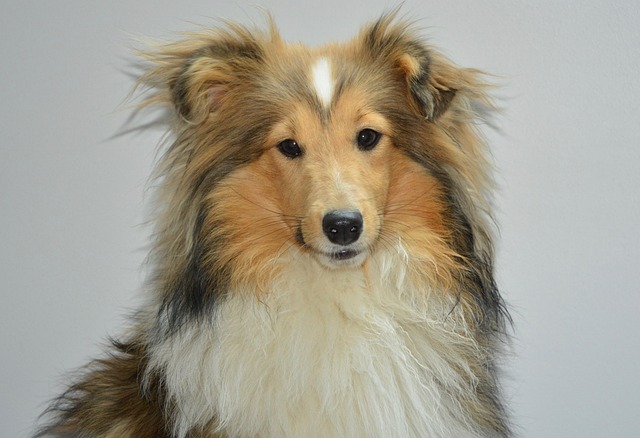
How can I tell if my dog's heatstroke is serious
Let’s be real: It’s a sticky August morning in Los Angeles, and you took your 2-year-old Golden Retriever, Max, for a walk a little later than usual
Watching your normally gentle pup suddenly bare their teeth, growl low in their throat, and lunge at a passing dog during your evening walk can leave you shaken, wondering if this aggression means they’ll never be “safe” around others. For new dog owners in suburban neighborhoods or city parks, the question “Can aggression in dogs be cured?” carries more than just curiosity—it’s about hope that your furry friend can learn to feel calm instead of threatened, turning tense moments into peaceful ones. The answer, while nuanced, is yes: aggression often can be managed and reduced, though it takes understanding, patience, and the right kind of training that honors their needs, not punishes their fears.
To tackle aggression, you first need to understand its roots—it’s rarely about “meanness.” Most canine aggression stems from fear: a dog who feels trapped, threatened, or overwhelmed by a situation (a strange dog invading their space, a loud noise startling them) reacts with aggression to protect themselves. Other times, it’s territorial—guarding food, toys, or their home—or tied to past trauma, like abuse or a scary encounter. Breeds often stereotyped as “aggressive” (Pit Bulls, Rottweilers) are no more inherently violent than Labs; their behavior depends on upbringing, training, and socialization. Aggression is a response, not a personality flaw—their brain is saying, “I feel unsafe, and this is how I cope.”
The key to managing aggression lies in changing that response through positive reinforcement, not punishment. Start by identifying triggers: Does your dog react to other dogs, strangers, or certain sounds? Once you know, create distance from those triggers to keep them calm, then use desensitization training. For example, if they growl at passing dogs, have a friend walk their calm dog 50 feet away while you feed your pup high-value treats (think freeze-dried liver). Gradually decrease the distance as your dog stays relaxed, teaching their brain, “That trigger = good things, not danger.” My neighbor in Denver did this with her rescue German Shepherd, who used to snap at men with hats: over 12 weeks of slow, treat-filled introductions, he now wags his tail at her brother, who wears hats daily. Always reward calm behavior generously—praise, treats, or play—and never punish growling (it’s their warning system; suppressing it can lead to unprovoked bites).

Your role as a calm leader matters most. Yelling, hitting, or using shock collars when they act aggressively amplifies their fear, making the behavior worse. Instead, stay steady: if they growl, calmly guide them away from the trigger without scolding, then reset in a quiet space. A trainer in Seattle calls this “compassionate correction”: your patience builds trust that you’ll keep them safe, reducing their need to “defend” themselves. Never force them into scary situations (“just get over it”)—this breaks trust, and studies prove gentle, gradual exposure works far better.
Responsible ownership weaves into this journey too. First, ensure their vaccines (rabies, required nationwide) are current—healthy dogs handle stress better, reducing reactive behavior. In apartments, manage interactions: keep them in a separate room when guests visit until training progresses, and clean up food bowls promptly to avoid resource guarding. When walking, use a sturdy leash and muzzle if needed (check local laws—some areas require them for reactive dogs), and always carry biodegradable poop bags, even during tense moments—community respect builds goodwill.
Aggression may not vanish overnight, but it can be managed. With understanding, positive training, and consistency, your dog can learn to feel safe in the world, replacing growls with wags—and proving that even challenging behaviors can soften with patience and love.

Let’s be real: It’s a sticky August morning in Los Angeles, and you took your 2-year-old Golden Retriever, Max, for a walk a little later than usual

You're enjoying a summer afternoon at the park when you notice your dog has stopped panting and appears disoriented - their gums are bright red

Let’s paint the picture: You’re in your Denver apartment, watching your 4-year-old Boston Terrier, Ruby, plop down mid-play session with her favorite toy

Many dog owners notice their pets nails seem shorter after regular walks,but how much does this daily activity actually help?The answer depends on where you walk—concrete sidewalks or asphalt streets gently file nails as a dog's paws hit the ground

Most dog owners notice their pup scooting across the carpet at some point, but few connect it to impacted anal glands. These small sacs near a dog’s rectum secrete a scent for marking territory

Most vets agree that regular dog teeth cleaning is key to avoiding painful dental issues later. For healthy adult dogs, a professional cleaning at the vet’s office every 12 to 18 months usually works well.